10 Best Italian Red Wine Types
Italia is the number one wine-producing country in the world, being the home of over 350 recognized grapes and having 20 wine regions. The country delivers over 16% of the world’s wine supply, and it is internationally recognized as the home of the best wines worldwide. It’s not an easy job to speak about all these wines, grapes, producers, and regions, but we try now to categorize the best Italian red wine types after the name of these great Italian wines, and not after producers or regions. You will find the most famous, most notable dry red Italian wines, as well as the dessert wine that can’t miss from a real Italian table. In this article, we cover the best types of red wine from Piemonte to Veneto, from Tuscany, all the way down to Sicily. Follow through to find the most famous names in the industry, and discover the most important notes and things to know about these delicious types of wine.
10 Best Italian Red Wine Types
There’s a perfect top Italian wine for every occasion, mood, situation, and meal. While Italians don’t drink wine with their pizza, they do drink it with many different types of Italian pasta dishes, meat, types of Italian cheese, and so on. There are types of wine that are to be consumed in specific parts of the day, with specific pairings, and there are those that have to be always consumed with specific dishes.
In our list, you will learn about the best dry red Italian wine types, sparkling red wines, and even the king of dessert wines, the Vino Santo. Don’t forget though, that you are on the website of Italy Best, and so here, you can find everything that’s great in Italy! On the side of this topic, we also cover white wines and sparkling wines separately.
1. Barolo
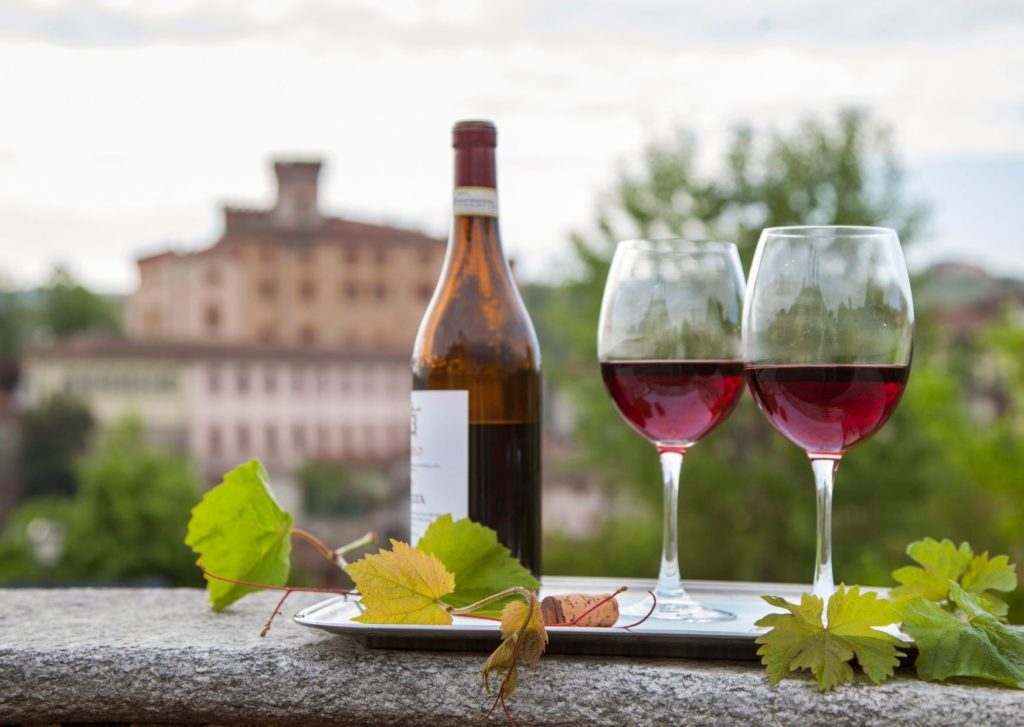
Among the best Italian red wine types the Barolo is the king of wines, and the wine of kings! This is a perfectly balanced wine that requires unique climatic conditions. Barolo is made in the region of Piedmont (Piemonte), in the northwest of Italy. This wine is made from Nebbiolo grapes and it is indeed the most preferred Italian red wine worldwide. The longer it ages, the more agreeable it becomes.
After the harvest, Barolo has to be kept in wood for at least 18 months, and it has to age at least 36 months before releasing it. If they age it for 5 years, it can be already labeled Riserva. Barolo has a clear ruby color, and it has earth notes, roses, tannins, licorice, and coffee. We must point out that the traditional winemakers produced the wine that had this stronger taste and it was rich in tannin. With the traditional modules, it can take 10 years for the wine to soften and be drinkable.
Modern-age winemakers, who try to produce more, changed to French oak barriques, as this helps with the fermentation. This however gives the Barolo a woody note too. This wine is perfect to pair with dishes based on truffles, pasta recipes with mushrooms, and meats, and of course on its own with aged cheese. Barolo, old or new, is a delicious wine, perfect for dinner dates, and we can recommend it only as it is one of our personal favorites too – given that we are living right next to the Piedmont region.
2. Brunello
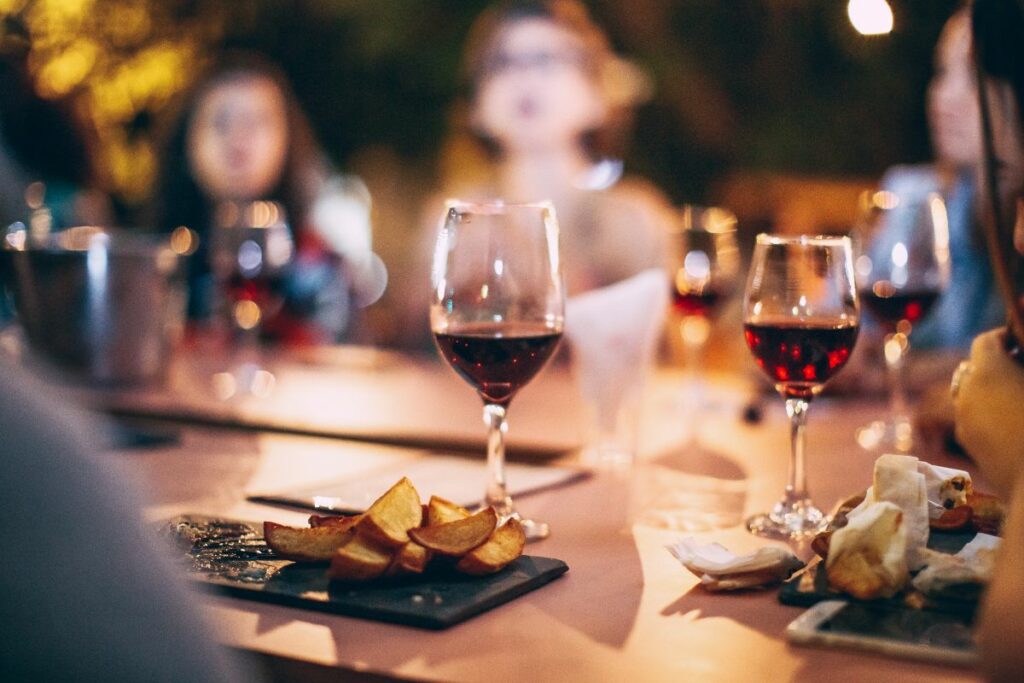
When it comes to dry red Italian wine types, it’s not easy to rank these wines, and it is not our job to do so. We only list the top Italian wine types, without any ranking factor! Brunello di Montalcino is a Tuscan red wine made with Sangiovese grapes. It gets its name from the local place called Montalcino. You can visit the area of Tuscany if you rent a car in Florence, and travel the region. Montalcino is a small medieval town in the Tuscan hills. Brunello di Montalcino is a complex wine and it improves over time.
For this wine, it takes time to age enough to be perfect. It must spend at least 2 years in wooden barrels and at least four months of aging in the bottle before it can be consumed. Opening a Brunello too early is a waste. For the truly perfect taste, it should age between 10 years and 30 years. And no, we are not joking! Another important rule for a perfect Brunello is the right storage, in the right cool wine cellar where it is kept at a constant temperature, and all the bottles have to be lied down.
Brunello di Montalcino has an intense ruby red color, and an intense aroma combining a dry, warm, slightly tannic, robust, and harmonious flavor. This wine can be paired fine with pappardelle pasta with wild boar meat ragu. It is heaven for the senses, trust me! Of course, other meat dishes, such as a great roast, steaks, or pork tenderloin are great with a glass of Brunello.
3. Amarone

Amarone is one of the best Italian red wine types, and it’s also a wine that’s not for everyone. This is a strong, concentrated dry red wine, produced in Valpolicella, in the Veneto region. Producers use the best quality Italian grapes for Amarone. They dry the grapes by 60% before the juice leftovers can be pressed out to start the winemaking process.
It’s a DOCG wine since 2010, which in Italian is Denominazione di Origine Controllata e Garantita. This in English means the origin is controlled and guaranteed, which is the highest classification of wine in Italy. Amarone is a full-bodied wine, recognized internationally for its elegance, complexity, and great aging potential. An intense ruby-red wine that takes on an orange reflection over time.
Amarone has a spicy scent and it’s very persistent. You could perceive cherry, walnut, forest fruits, spices, and even chocolate flavors. This is a perfect wine for braised meat or traditional meat, stews, lasagna, or gnocchi with moldy cheese (such as the Gorgonzola). You must also know that Amarone is a wine that has an alcohol level that exceeds 15%. A luxurious wine, probably the most opulent dry wine produced in the famous Valpolicella area.
4. Lambrusco

When it comes to great Italian wines, we can’t ignore one of the wines of my Italian home region. Lambrusco is not only a top Italian wine, it’s from the beautiful region of Emilia Romagna, and it’s the perfect dry, light sparkling red wine that pairs perfectly with antipasti, and lunch too. It doesn’t have a strong bubble like most of the white sparkling wines, but it’s lightly fizzy.
A red wine that’s actually great and refreshing on hot summer days too. Opposite to the wines we spoke about until now, Lambrusco is best to be consumed when it is still young. This one doesn’t need a long aging time for a perfect taste. The taste of Lambrusco is fresh and savory, and it’s ideal for the region’s variety of pasta dishes. It is an excellent wine for dessert too!
In Emilia Romagna, the Italian Food Valley, among many famous dishes and food products, there are some wines that we can’t look over. Lambrusco is produced mainly in the provinces of Parma, Reggio Emilia, and Modena. If you are traveling through this amazing area, order some Lambrusco on the side of your lunch, or even go visit some agriturismo in the region for the best wine-tasting experience!
5. Montepulciano d’Abruzzo

Among Italian wine names, there are a few that everyone heard of who has any small knowledge of Italian dry red wine types. Montepulciano from Abruzzo is among the most famous wines worldwide, and it’s in the area what Barolo is in Piemonte. Among its many characteristics, we must know that this region is southern, so according to the climate, the wine is changing too.
Montepulciano is an intense ruby red wine that turns orange with time. It has an intense and persistent aroma, juicy and grapey flavors with soft, supple tannin, and with notes of red fruit, cherry, dried rose, vanilla, and some spicy notes even. The ideal aging time is between 4 and 6 years.
While this wine isn’t as tasty, as rich, as flavors as the northern wines, winemakers managed to elevate its quality over the years, and it did receive the DOC nomination. Montepulciano d’Abruzzo pairs well with meant-based sauces, such as the ragu, but also with pork fillet (lonza), salt-cured mountain ham, roasts, stews, and both white and red meats. On the side of the meat, the hard cheeses and tomato-based pasta sauces pair well with Montepulciano too.
6. Dolcetto d’Alba
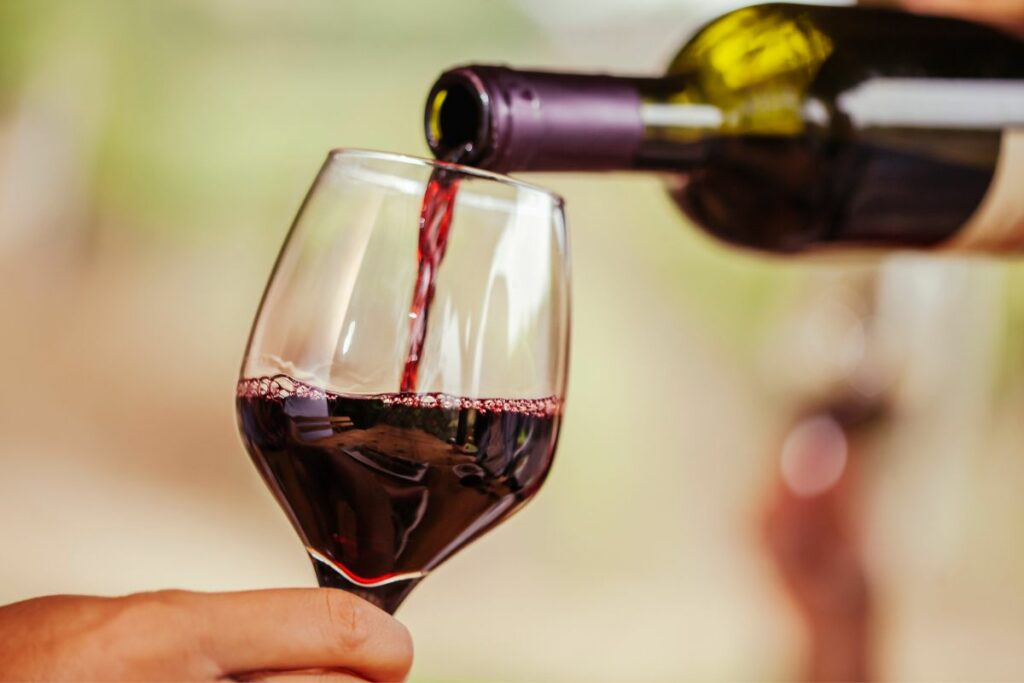
We are heading back to the north, as Dolcetto d’Alba comes from the region of Piedmont region. It is produced in 36 communes in the region, southeast of the town of Alba. The production area overlaps that of Barolo and Barbaresco too. The difference is, that the Dolcetto grapes thrive in sandy calcareous and tufa-rich soils, so that’s how these vineyards are prepared.
Dolce d’Alba is considered one of the best Italian red wine types, having a ruby red color that sometimes has violet reflections. This dry wine is one of the seven Dolcetto-based DOC wines, and it’s considered one of the most important classified reds made from Dolcetto grapes. It’s noted for a juicy fruit character, it has low levels of acidity and mild tannins.
Dolcetto d’Alba features black cherry fruit flavors, sweet spices, and a bitter almond finish. These are characteristics of almost all wines made of this variety of grapes. It’s an easy-drinking wine that has been considered the everyday drop of the local community. Dolcetto, just like the Lambrusco is drunk young. It’s great to pair with antipasti, and also local dishes made with Tajarin pasta.
7. Gattinara

While we all start to wonder about purchasing some Italian dry red wine at this point, instead of reading about it, I urge you to stay with us and discover another DOCG-classified wine, the Gattinara. When it comes to great dry red Italian wine, as you can see, we have more than enough options, and most of them are indeed from northern Italy.
Gattinara too, is a red wine made in the Piedmont region, and it’s made of our favorite grape, the Nebbiolo. All this is produced of course within the boundaries of the comune of Gattinara in the province of Vercelli. It has a fantastic garnet red color with orange reflections and features a fine, spicy, and floral flavor. Gattinara has a harmonious taste, that combines well with risotto dishes for instance, but also with boiled meat.
Gattinara had a DOC classification since 1967, and it was given the DOCG classification in 1990. As a rule for this wine, it must contain 90% of Nebbiolo. As for the remaining 10%, they use the Uva Rara variety which is also known as Boarda di Gattinara, and/or Vespolina. Another characteristic is that the vines grow on iron-rich gravel soils of volcanic origin, with traces of carbonate, magnesium, and calcium. Also, the continental climate is important for the perfect Nebbiolo grapes.
8. Rosso di Montalcino

If you think we are done listing these great Italian wines, you are wrong! We are heading back to Tuscany once again to see another option for the best Italian red wines, the Rosso di Montalcino. Montalcino is known as a land dedicated to quality, which resulted in making this the only area to obtain from the same vineyards two wines with denominations of controlled origin. Quite a rarity, even in Italy!
Brunello is one of these wines, which we already discussed. This is known for precise technical evaluations, destined to age for a long time. Then, there is our Rosso di Montalcino, which is a younger wine featuring a great structure, and attributes of particular freshness and vivacity. Rosso di Montalcino is an elegant, sapid, harmonious ruby-colored wine with good intensity and fragrance of fresh fruit.
This wine back in the day was called Vermiglio, and it is known to be a fruity red wine produced in the village of Montalcino and Montalcino only. Another lovely Tuscan town you can even visit, and well, try some wines too! The minimum alcohol level must be 12%, but if it’s aged, it can easily reach 14.5% too. Rosso di Montalcino is great to pair with red meat, poultry, and pasta dishes, as well as mushroom and truffle sauces.
9. Gutturino
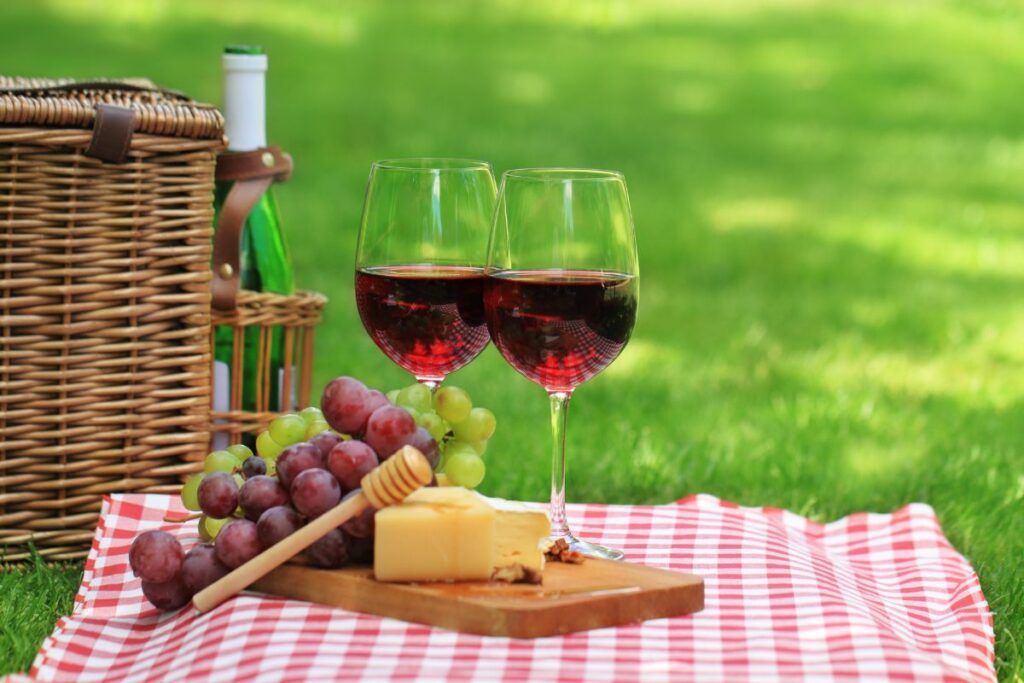
Gutturino is Piacenza’s symbol when it comes to the best Italian red wine types. As someone who lived for a long time in Piacenza, believe me when I say, that for us, real and adopted Piacentin people, a good Italian red wine will always mean a good Gutturino. Thanks to the hard work of local winemakers, Gutturino is now taken seriously.
There is a bubbly, a still, and a Riserva version available for this red wine, while the Riserva is aged for 2 years. Gutturino is born from the blend of two types of grapes, the Barbera and the Boarda. One gives this wine structure and strength, the other provides smoothness and elegance. The grapes, since they have different needs, they are blended together only at a further part of the winemaking process, not at the beginning.
This wine matches perfectly with Piacentine primi piatti like the Pisarei a Faso and different types of tortellini, but they are also a great match for the famous Salumi of Piacenza. If you visit the region of Emilia Romagna, don’t miss this beautiful little town that lies between Parma and Milan, halfway between the two. It’s a place that will always stick to you and will become a part of your heart.
10. Chianti Classico

What is one of the dry red Italian wine names that everyone who knows what Italian wine is knows? Oh yes, it is the Chianti Classico indeed! Classico refers to the area where this wine was historically produced over the centuries. Chianti follows very strict regulations, and it is one of the most well-known red drinks from Italy, for sure. But let’s see some characteristics, and details about it, shall we?
This is a DOCG wine, which as discussed is the highest wine classification in Italy. A Chianti is not enough to be produced in the Chianti area to be called “Classico”. One of the main rules for wine production is to use 80% Sangiovese grape and 20% other grapes such as Colorino or Canaiolo. First, Chianti is a bright ruby color wine, with a dry and savory taste and it has some unique peculiarities too.
The wine is characterized by floral notes, a harmonious, dry, and sapid flavor, and a good level of tannin. To be classified as Classico, the alcohol level must be a minimum of 12%. To achieve the Riserva nomination, the wine must be aged for 24 months, which includes 3 months of bottle fining. For a Chianti Classico Riserva, the alcohol level has to be a minimum of 12.5%.
Wrapping up the 10 best Italian red wine types
It’s very hard to name a top Italian wine. There are numerous types of grapes, numerous types of wines, and even more producers of good Italian red wine. Within this article, our goal was to focus on the most famous, most popular, and most purchased types of red wines in Italy, and to highlight their characteristics, notes, flavors, and pairings. As we mentioned earlier, we cover other types of wines, even winemakers, wine glasses, and everything that’s Italian, so please, make sure you check our website, and you follow us on Facebook and/or Instagram too!
Italian version: Migliori vini rossi Italiani
Pin it: 10 best Italian red wine types
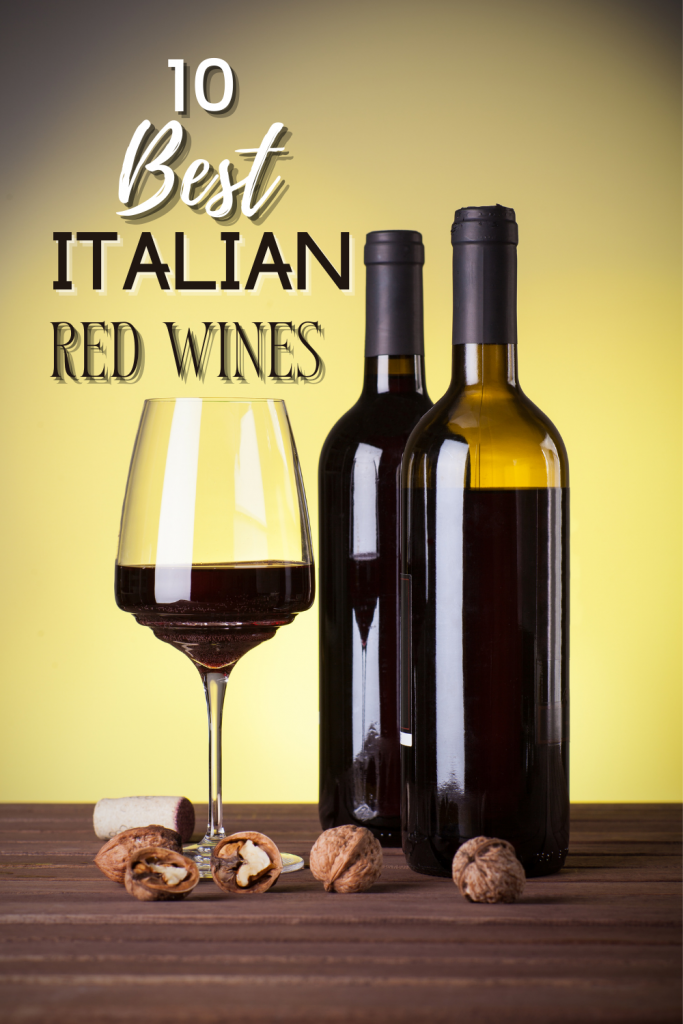
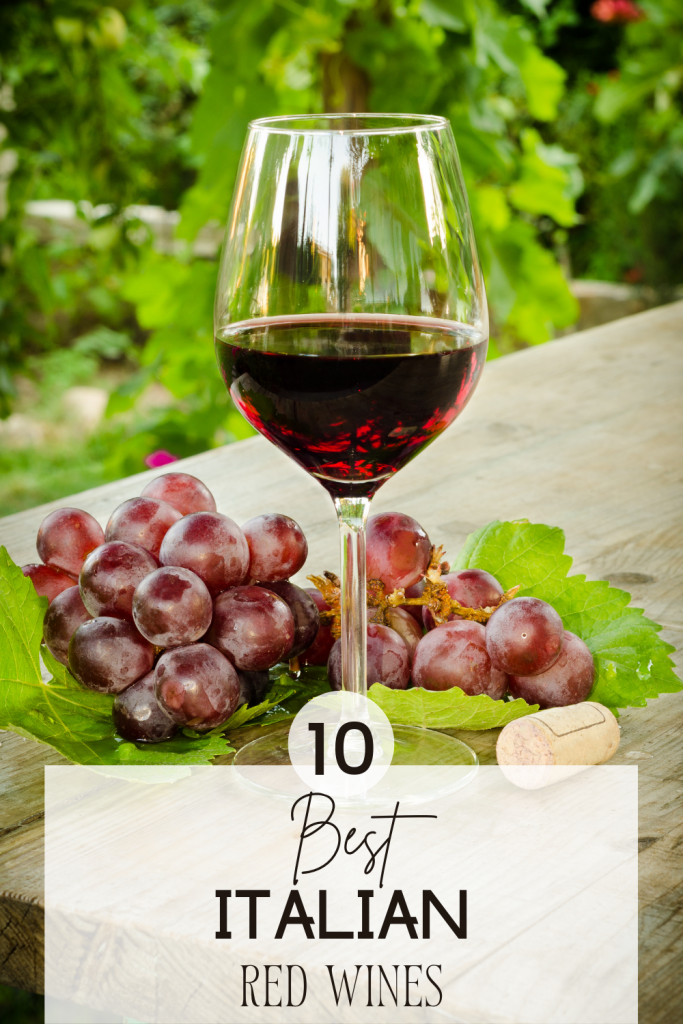
3 thoughts on “10 Best Italian Red Wine Types”
Comments are closed.
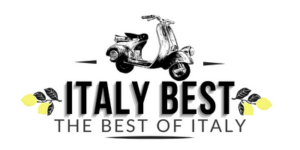
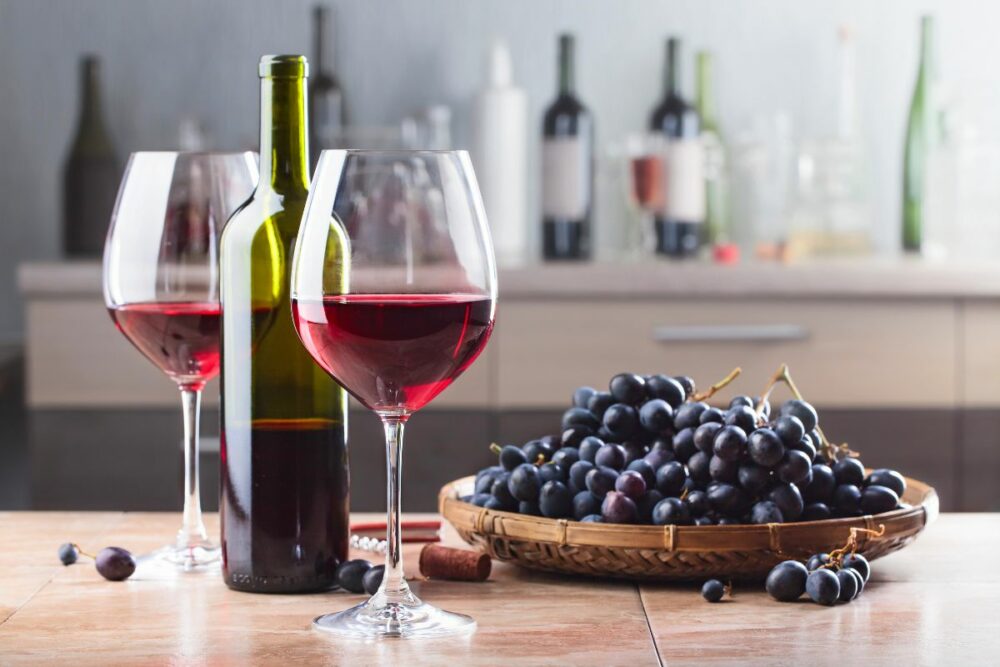
The Italian and the French wine are definitely the best
In Italy you can think the perfect combination between a good wine and a good cheese 👌
Gattinara, a pure happiness